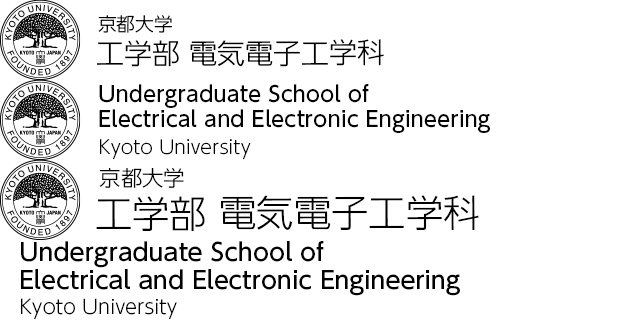Applied Nano-electronics
Shiraishi Lab. was established in Oct. 2013. Central interests of our laboratory are towards Group-IV spintronics using silicon, germanium graphene and so on, control of a pure spin current (a flow of spin angular momentum with a charge flow) and creating novel spin devices using a pure spin current, spin caloritronics (a fusion domain of spintronics and thermoelectronics), fundamental physics of topological insulators and related materials, and vacuum nano-electronics. The detail is described in the Lab. HP.
Academic Staff
Masashi SHIRAISHI
Professor (Graduate School of Engineering)
Research Interests
Contacts
Yuichiro ANDO
Program-Specific Associate Professor (LEADER)
Research Interests
Contacts
Ryo OHSHIMA
Assistant Professor (Graduate School of Engineering)
Research Interests
Contacts
Ei SHIGEMATSU
Assistant Professor (Seiran Program)
Research Interests
Contacts
Sachin GUPTA
Program-Specific Assistant Professor
Research Interests
Contacts
Introduction to R&D Topics
Group-IV Spintronics
Semiconductor spintronics has been attracting much attention in recent years. Among various semiconductors, Si, Ge and nano-carbon materials (graphene, carbon nanotubes and fullerenes), which are group-IV semiconductors, are recognized as quite potential materials, because (1) carbon is a light element and (2) Si and Ge have lattice inversion symmetry, allowing good spin coherence. Our main research is to understand spin relaxation and its related physics in group-IV semicondcutors, and to fabricate novel spin-based devices, such as spin transistors.
Spincurrentronics
A pure spin current is a new physical current, which is completely different from a charge current and a spin polarized current. In a charge current and a spin polarized current, a motion of charge, a degree of freedom of an electron, is. However, in a pure spin current, only a spin angular momentum, the other degree of freedom of an electron, flows without a charge flow. Since the pure spin current, in ideal, possesses time reversal symmetry, this can allow opening a novel field, the dissipationless electronics. Spin current also enables a new spin-dependent scattering effect, the spin Hall effect and its reciprocal effects. Our research purposes are to generate and propagate a pure spin current in a wide variety of materials, to control the pure spin current, and to understand fundamental physics of the pure spin current, i.e., to understand "spin conversion science". To create a "spincurrentronics" devices is also within our interest.
Spincaloritronics
Spincaloritronics is a quite new research field, which is a fusion domain of conventional spintronics and thermoelectronics. It has been well-known that thermal gradient can induce a charge flow, the Seebeck effect, and vice versa, the Pertier effect. Recently, physicists discovered thermal gradient can induce a pure spin current, the spin-Seebeck effect, and its reciprocal effect. Our interest is to understand an interplay between a pure spin current and a heat current in semiconductor spin devices.
Topological Insulators
Topological insulators (TIs) are a new phase of solids, which are different from semiconductors and metals. In TIs, bulk states are insulating, whereas a surface state is metallic. And more importantly, the surface state is 100% spin polarized and the so-called "persistent spin current" flows on the surface of TIs. Our interest is detection and control of the surface spin polarization. Bi-based compounds (BiSe, BiSbTeSe, and so on) and pure Bi provide a material stage for this research.
Vacuum nanoelectronics
Using semiconductor micromachining technology we are forming miniature electron sources ranging in size from micro to nanoscale, with the aim of opening up new technological possibilities such as electron devices in harsh environments. While the development of miniature electron sources involves various elemental technologies, our lab's main research focus is the development of stable, long-life, cathode materials and the design of devices utilizing them, and the establishment of methods for evaluating the characteristics of field electron emission.
